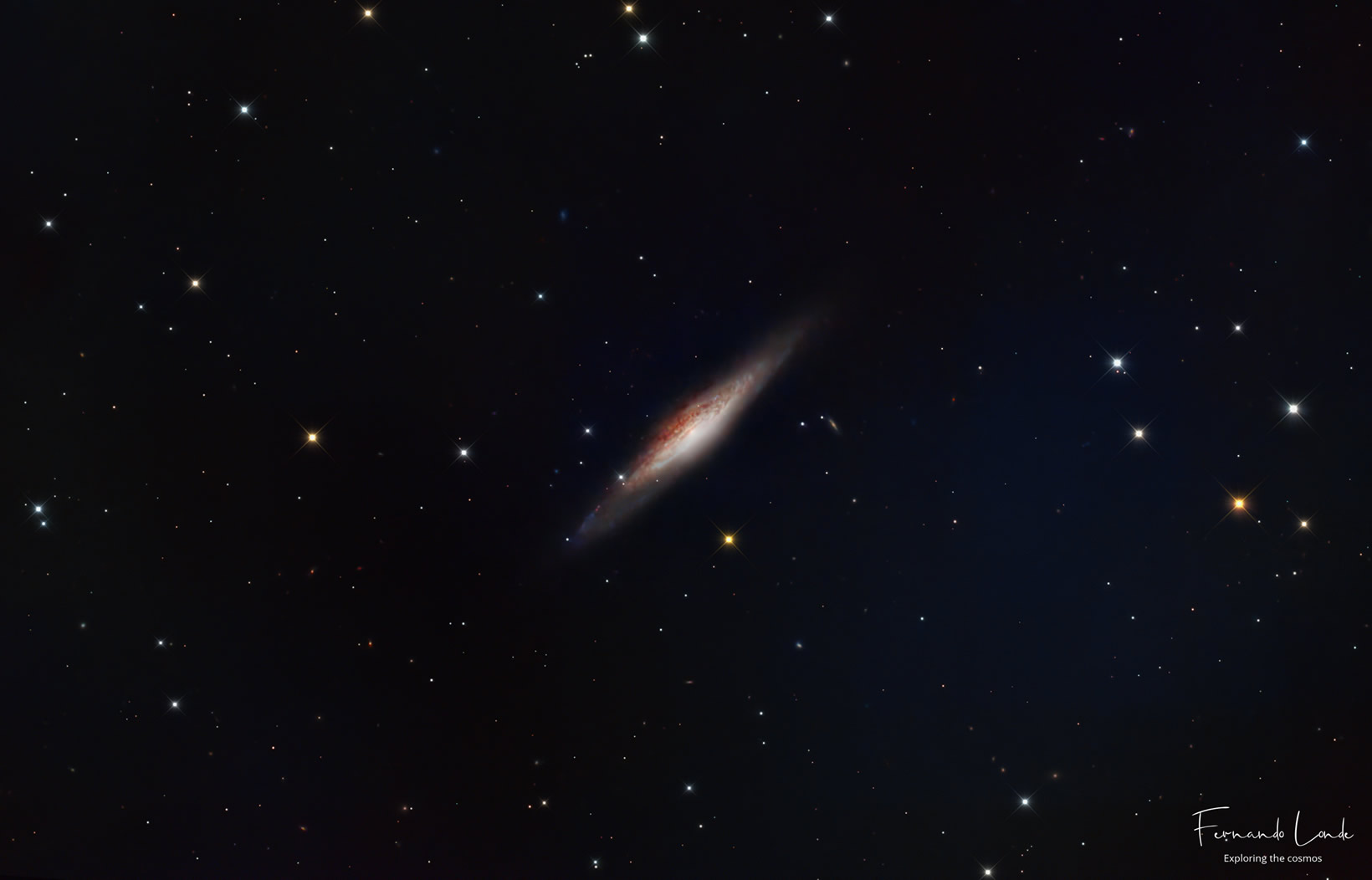
After relentless hours, I finally figured out my focuser issue,
It turned out to be a back focus problem after I installed the rotator and the filter wheel (focuser routine).
By using the aberration inspector in N.I.N.A and CCD Inspector,
I discovered that I was -6 steps away from my reducer. After adjusting to -2 steps, things looked much better.
However, I also noticed the top left corner had a slight tilt, which required me to collimate once again. Bingo—all set!
It's not that I enjoy encountering issues, but each one becomes an opportunity to learn something new and improve.
NGC 2683, located in the constellation Lynx, is a captivating spiral galaxy approximately 30 million light-years away from Earth.
This galaxy is often referred to as the UFO Galaxy due to its distinctive, elongated shape that resembles a flying saucer.
Observing NGC 2683 is challenging due to its faintness and distance. However, with my RC telescope and good seeing conditions,
I was able to capture some details, such as the galaxy's spiral arms and subtle structure.
Scientific Significance: NGC 2683 is an excellent example of a field spiral galaxy,
meaning it is not part of a galaxy cluster and is relatively isolated.
Studying such galaxies helps astronomers understand the formation and evolution of spiral galaxies in the universe.
Conclusion: NGC 2683 is a fascinating object for both visual observers and astrophotographers.
Its unique shape and distant location make it a rewarding target for those willing to invest the
time and effort to observe and capture its beauty.
Telescope TS-Optics 300mm/12" f/8 Ritchey-Chrétien Astrograph (truss)
Camera ZWO ASI2600MC DUO
Mount iOptron CEM120
Filters Antlia Triband RGB Ultra Filter - 2.00'' Mounted
Location: Matthews, NC
Date: February, 17 2025